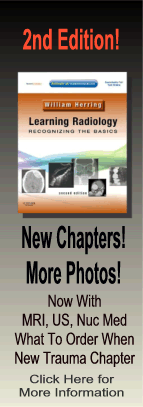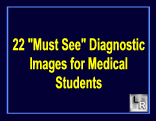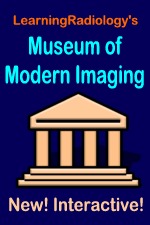| Cardiac | |
|---|---|
| GI | |
| Bone | |
| GU | |
| Neuro | |
| Peds | |
| Faculty | |
| Student | |
| Quizzes | |
| Image DDX | |
| Museum | |
| Mobile | |
| |
Misc |
| Videocasts | |
| Signs | |
Learning
Radiology:
Recognizing
the Basics
Available
on the Kindle
and IPad
LearningRadiology Imaging Signs
on Twitter
![]()
Follow us on
What is the most likely diagnosis?
- 40 year-old with dry cough and shortness of breath
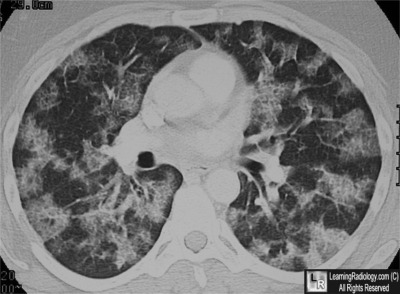
Contrast-enhanced axial CT scan of chest
- Hemophilia
- Usual Interstitial Pneumonia
- Alveolar Proteinosis
- Silicosis
- Lymphangiomyomatosis
Additional image - Contrast-enhanced axial CT scan of chest at a higher level
Answer:
3. Alveolar Proteinosis
More (Click Discussion Tab)
Alveolar Proteinosis
General Considerations
- Rare disorder of unknown etiology
- Alveoli are filled with PAS-positive proteinaceous material derived from surfactant phospholipids and proteins
- Males are affected 4X more than females; the disease is most common from 20-50 years of age
- It may be primary or secondary (to pulmonary infections, inhalation of silica or insecticides and hematologic malignancies)
- Diagnosis is usually made by lung biopsy
MORE . . .
.
This Week
40 year-old with dry cough and shortness of breath |
Some of the fundamentals of interpreting chest images |
The top diagnostic imaging diagnoses that all medical students should recognize according to the Alliance of Medical Student Educators in Radiology |
Recognizing normal and key abnormal intestinal gas patterns, free air and abdominal calcifications |
Recognizing the parameters that define a good chest x-ray; avoiding common pitfalls |
How to recognize the most common arthritides |
LearningRadiology
Named Magazine's
"25 Most Influential"
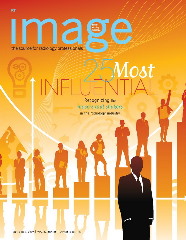
See Article on LearningRadiology
in August, 2010
RSNA News
| LearningRadiology.com |
is an award-winning educational website aimed primarily at medical students and radiology residents-in-training, containing lectures, handouts, images, Cases of the Week, archives of cases, quizzes, flashcards of differential diagnoses and “most commons” lists, primarily in the areas of chest, GI, GU cardiac, bone and neuroradiology. |

